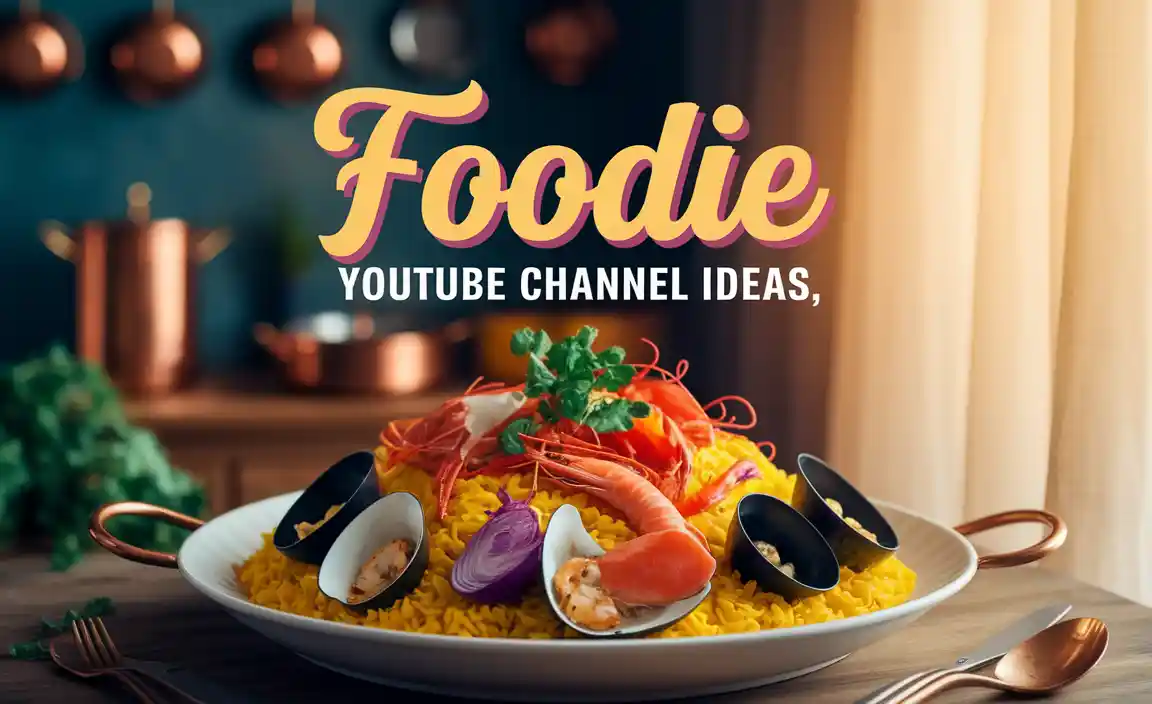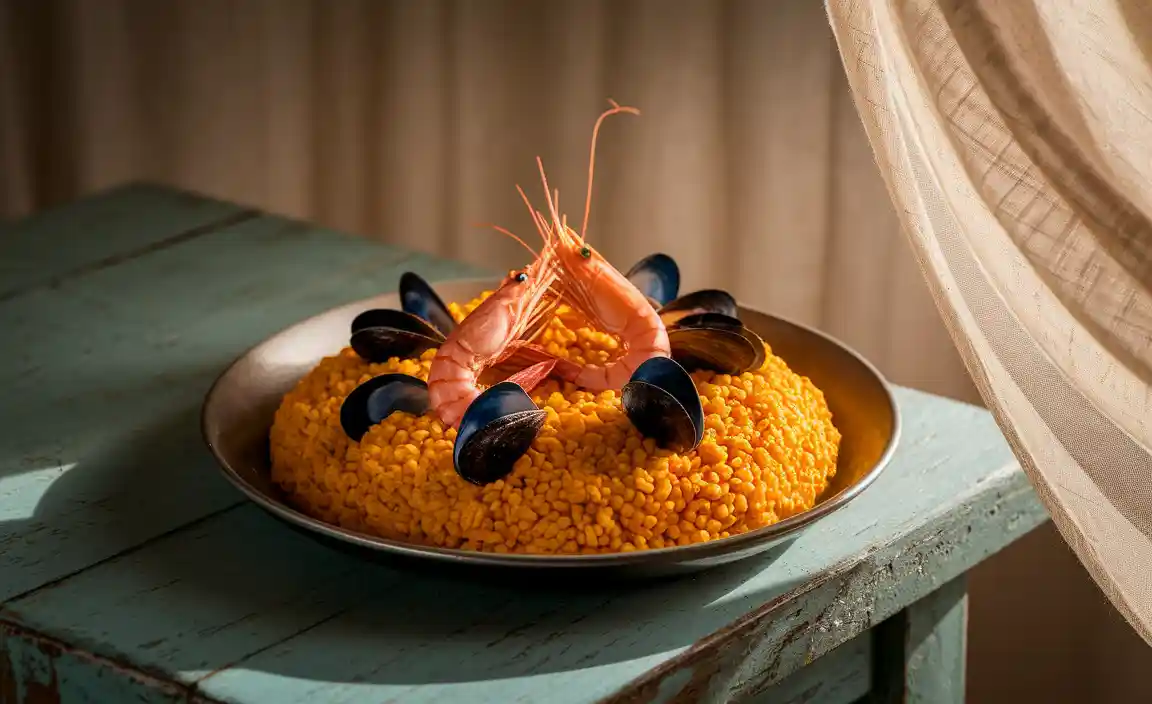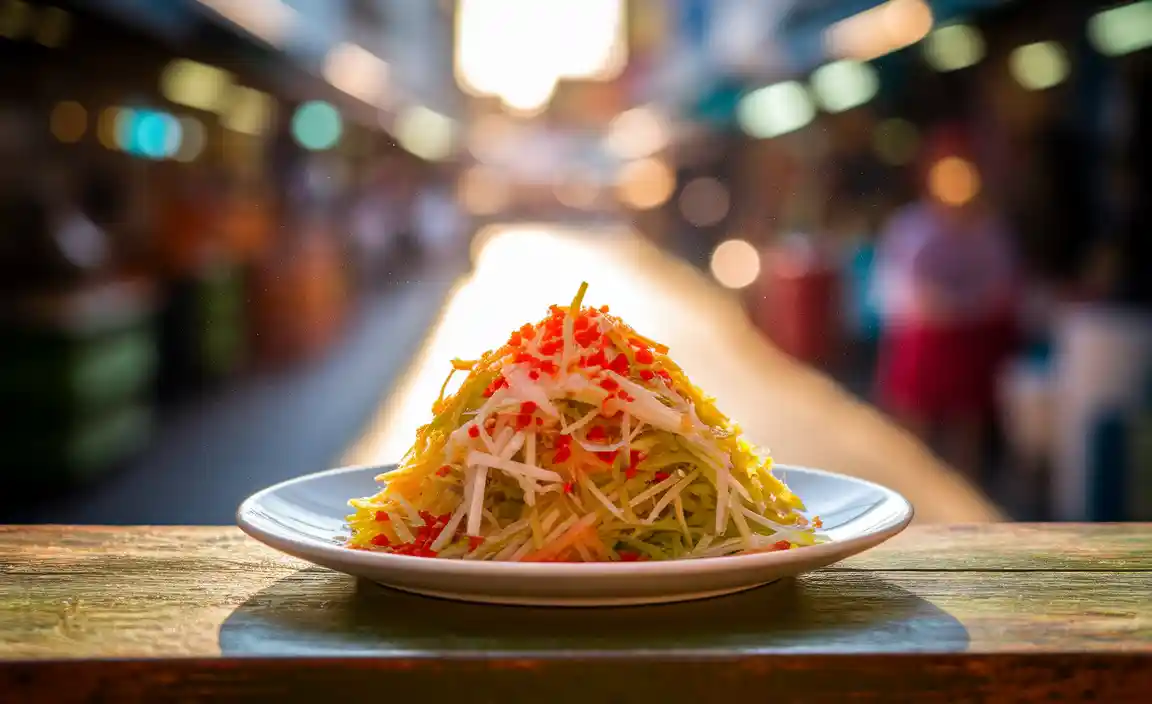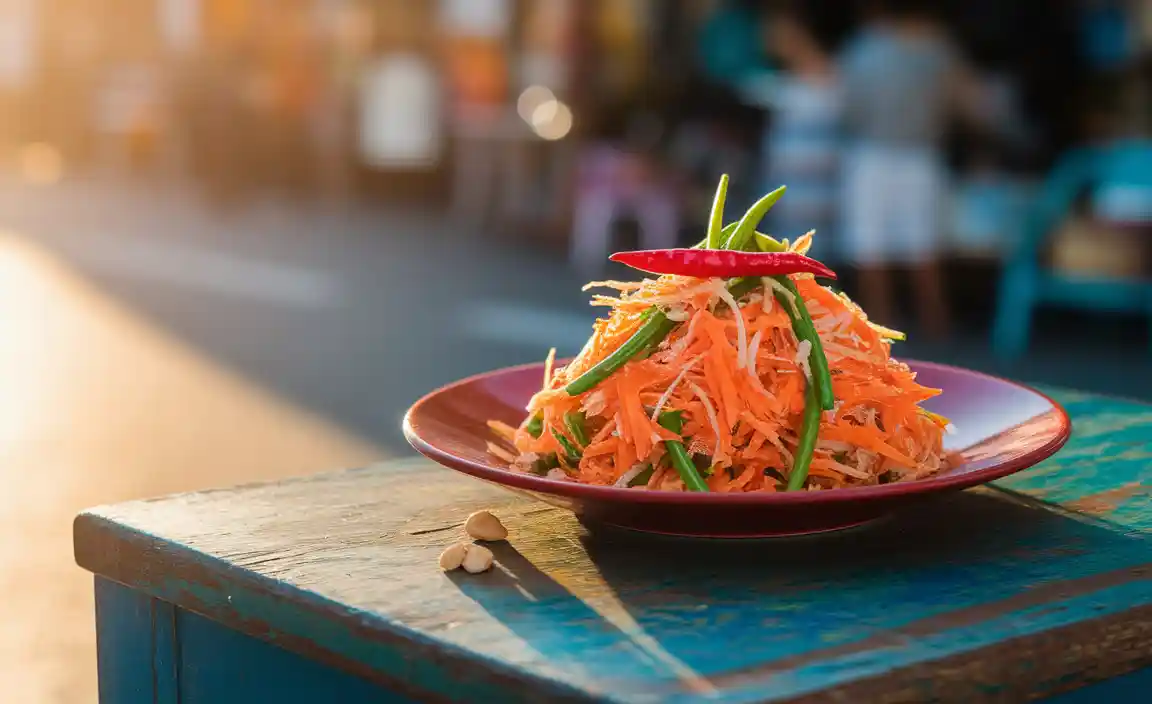Quick Summary:
Starting a foodie YouTube channel with a travel focus? Discover compelling content ideas like local street food tours, market explorations, and culinary history dives. Essential tips include planning your trips for maximum culinary impact, engaging with locals, and mastering on-the-go filming techniques for delicious, shareable travel food adventures.
Dreaming of sharing your love for food with the world, but unsure where to start? Perhaps you’re an avid traveler who finds the best stories in a steaming bowl of noodles or a perfectly grilled local delicacy. Combining these passions can feel overwhelming, especially when you’re just beginning. You might wonder, “Can my passion for food and travel really translate into a successful YouTube channel?” The good news is, absolutely! With the right ideas and a few straightforward tips, you can create captivating content that resonates with a hungry audience.
This guide is crafted to demystify the process. We’ll explore exciting foodie YouTube channel ideas centered around travel, offering actionable advice to get you filming and sharing your delicious journeys. Get ready to turn your culinary adventures into content that delights and inspires!

Why Combine Foodie Adventures with Travel on YouTube?
The world is a giant pantry, and each destination offers unique flavors and culinary traditions. For aspiring YouTubers, this presents an incredible opportunity. Audiences are constantly searching for authentic experiences, and food is a universal language that connects people to cultures. When you merge the excitement of travel with the universal appeal of food, you tap into a powerful niche.
Think about it: people love to travel vicariously through their screens. They want to discover new tastes, learn about different cooking methods, and understand the stories behind the dishes. A foodie travel channel offers them an all-access pass to these experiences, all from the comfort of their own homes. It’s a way to explore the globe, one delicious bite at a time, and share that exploration with others seeking similar inspiration.
Top Foodie YouTube Channel Ideas for Travelers
Ready to brainstorm? Here are some fantastic ideas to get your foodie travel YouTube channel off the ground. We’ll dive into what makes each one unique and audience-grabbing.

1. Local Street Food Deep Dives
Street food is the heart and soul of a city’s culinary identity for many destinations. It’s often the most authentic, affordable, and exciting way to taste a place. Your channel can become the go-to guide for discovering the best hidden street food gems.
- Content Focus: Explore a specific city or region, finding and reviewing its most iconic street food dishes. Think tacos in Mexico City, pho in Hanoi, or falafel in Jerusalem.
- Unique Angle: Go beyond just eating. Talk to the vendors, learn about the ingredients, understand the cultural significance of the dish, and perhaps even try to make a simplified version yourself.
- Visual Appeal: Capture the vibrant atmosphere of street markets, the sizzle of cooking, and the colorful presentation of the food.
2. Market Tours & Ingredient Hunts
Food markets are vibrant hubs of local life and a treasure trove of ingredients. They tell a story about the seasonality, agriculture, and culinary preferences of a region.
- Content Focus: Take your viewers on a guided tour of local markets. Showcase unique fruits, vegetables, spices, and local produce you might not find anywhere else.
- Unique Angle: Interview local farmers or vendors. Discuss seasonal produce and how it’s used in traditional dishes. You could even buy ingredients and attempt to cook a meal inspired by your market finds.
- Visual Appeal: Markets are incredibly visually rich. Focus on the textures, colors, and the bustling energy of the place.
3. Culinary History & Origin Stories
Every dish has a past, and understanding its history can add a rich layer to the culinary experience. This idea appeals to viewers who are curious about culture and context.
- Content Focus: Investigate the origins of famous dishes from different countries or regions. Research the historical influences, cultural significance, and evolution of these foods.
- Unique Angle: Visit historical sites related to food, interview local food historians or chefs, and try to recreate older versions of classic dishes to see how they’ve changed.
- Visual Appeal: Mix footage of the food with historical imagery, B-roll of relevant landmarks, and engaging storytelling.
An excellent resource for understanding food history is the Food History project, which delves into archives and scholarly research.
4. Farm-to-Table Experiences
For viewers interested in sustainability and quality ingredients, showcasing the journey from farm to plate is captivating. This taps into a growing demand for transparency in food production.
- Content Focus: Visit local farms, vineyards, or artisanal producers. Document the process of growing or creating key ingredients and how they end up on a plate.
- Unique Angle: Participate in activities like harvesting, cheese-making, or wine tasting. Connect the producer directly with a chef or restaurant that uses their products.
- Visual Appeal: Stunning shots of natural landscapes, close-ups of fresh produce, and the rustic charm of rural life.
5. Restaurant Reviews with a Local Twist
While there are countless restaurant review channels, adding a travel and local perspective makes yours stand out. It’s not just about the food; it’s about the dining experience in its cultural context.
- Content Focus: Review restaurants in different travel destinations. Highlight not just the food quality, but also the ambiance, service, and how the restaurant embodies local culture.
- Unique Angle: Focus on authentic, perhaps lesser-known, local eateries rather than just tourist traps. Seek out recommendations from locals for a truly authentic experience.
- Visual Appeal: Well-shot food plating, attractive restaurant interiors, and footage that captures the vibe of the dining area.
6. Cooking Classes Abroad
Learning to cook a local dish from an expert is a fantastic travel experience and makes for compelling content. Viewers can learn alongside you!
- Content Focus: Take authentic cooking classes in your travel destinations. Document the entire process, from learning new techniques to cooking the final dish.
- Unique Angle: Choose classes that focus on unique or challenging local cuisines. Share the tips and tricks you learn from the instructor and then try to replicate the dish back home.
- Visual Appeal: Clear shots of the cooking process, close-ups of ingredients, and the satisfaction of a delicious, handmade meal.
7. Food & Drink Pairing Adventures
Explore how local foods are traditionally paired with drinks, whether it’s wine, beer, spirits, or non-alcoholic beverages.
- Content Focus: Discover local beverages and the foods they complement best. This could cover wine regions, craft beer scenes, or unique traditional drinks and their culinary pairings.
- Unique Angle: Visit wineries, breweries, or distilleries. Interview sommeliers or mixologists. Experiment with pairings yourself and share your findings.
- Visual Appeal: Elegant shots of drinks being poured, beautifully presented food pairings, and scenic views of vineyards or breweries.
Essential Travel Tips for Your Foodie YouTube Channel

Once you have your content ideas, successful execution on the road is key. Here are some practical tips to ensure your travel vlogs are as smooth and delicious as possible.
1. Pre-Trip Planning: The Foundation of Great Content
Don’t wing it! Strategic planning makes a huge difference.
- Research Destinations Thoroughly: Identify key culinary cities, regions, and specific dishes popular in your chosen locations. Look for cultural food festivals or events happening during your visit for unique content opportunities.
- Identify Potential Locations: Use travel blogs, local guides, and even other YouTubers (for inspiration, not imitation!) to pinpoint highly-rated restaurants, vibrant markets, and unique food experiences.
- Create an Itinerary (Flexible!): Outline which culinary experiences you want to capture each day. Have backup options in case something doesn’t work out. Balance filming with actual enjoyment of the travel and food.
- Check Food Regulations & Etiquette: Understand local customs around food, dining, and photography. In some cultures, photographing food or asking intrusive questions can be frowned upon.
- Budgeting: Factor in the cost of meals, potential entry fees for attractions, and any special ingredients or equipment you might need to purchase for cooking segments.
2. Gear Up Right: Essential Tech for Filming on the Go
You don’t need a Hollywood studio, but a few key pieces of equipment will elevate your video quality.
- Camera: A good smartphone with excellent video capabilities is a great starting point. For higher quality and more control, consider a mirrorless camera or a compact vlogging camera.
- Microphone: Good audio is CRUCIAL. A small lavalier (clip-on) microphone or a directional shotgun mic for your camera will significantly improve sound quality over your camera’s built-in mic, especially in noisy environments.
- Stabilization: A small tripod, gimbal, or even just a steady hand can make a world of difference. Shaky footage is a common viewer turn-off.
- Power Banks: Keep your devices charged. You’ll be using them a lot, and you don’t want to miss capturing that perfect moment.
- Extra Storage: Bring extra SD cards or ensure your cloud backup is set up. Video files are large!
3. Engaging Your Audience: Storytelling & Presentation
It’s not just what you show, but how you present it.
- Be Authentic: Let your personality shine! Share your genuine reactions to the food and your travel experiences. Viewers connect with real people.
- Tell a Story: Don’t just show food; tell the story behind it. Where did it come from? Who made it? What does it mean to the local culture?
- Visual Storytelling: Use a mix of wide shots, medium shots, and close-ups to make your videos dynamic. Capture the ambiance of the location as well as the food itself.
- Clear Narration: Speak clearly and enthusiastically. Explain what you’re tasting, smelling, and experiencing.
- Call to Action: Encourage viewers to comment, like, subscribe, and share their own travel food experiences or recommendations.
4. Interacting with Locals: The Secret Ingredient
Locals are your best resource for authentic experiences and genuine stories.
- Be Polite and Respectful: Always ask permission before filming people or their establishments. A smile and a “hello” go a long way.
- Ask Questions: Learn about the dishes, ingredients, and traditions. Most people are happy to share their culture with interested visitors.
- Seek Recommendations: Ask locals where they eat. This is how you find the true hidden gems, often away from tourist crowds.
- Learn Basic Phrases: Knowing a few words of the local language (e.g., “hello,” “thank you,” “delicious”) can open doors and foster goodwill.
5. Filming & Editing on the Go: Workflow Hacks
Balancing travel and content creation requires efficient workflows.
- Shoot B-roll Constantly: Capture extra footage of the surroundings, textures, activities, and people. This footage is invaluable for editing and will make your videos much more engaging.
- Organize Your Footage: As soon as you have downtime (e.g., on a train, in your hotel), transfer your footage and start organizing it by location or day. This prevents chaos later.
- Use Mobile Editing Apps: Apps like LumaFusion (iOS) or KineMaster (Android) allow for powerful editing directly on your phone or tablet, enabling you to upload videos sooner.
- Keep it Concise: While thoroughness is good, viewers on YouTube often prefer punchy, well-paced videos. Edit out unnecessary pauses or rambling.
- Focus on Audio Quality: Even with good visuals, poor audio can ruin a video. Ensure your narration and ambient sounds are balanced.
Content Idea Examples & Potential Structure
Let’s put it all together with a sample structure for a video, say, exploring street food in Bangkok.
Sample Video Structure: “Bangkok’s Best Street Eats: A Spicy Adventure”
-
Hook (0-30 seconds):
- Fast-paced montage of mouth-watering street food shots.
- Enthusiastic opening: “Hey food explorers! Joseph Bryant here from FoodsGuider, and we are LIVE in the vibrant streets of Bangkok, ready to dive fork-first into some of the most incredible street food the world has to offer!”
- Tease what’s coming: “We’re hunting down spicy papaya salad, savory satay, and maybe even some sweet mango sticky rice!”
-
Introduction to the Location (1-2 minutes):
- Briefly introduce Bangkok and its reputation for fantastic street food.
- Show some general street scenes – bustling markets, traffic, local life – to set the atmosphere.
- Mention the specific area you’re focusing on for this episode (e.g., Yaowarat – Chinatown).
-
First Food Stop: Som Tum (Papaya Salad) (3-5 minutes):

-
- Find a popular vendor. Show them preparing the salad.
- Interview the vendor (if possible, with translation or subtitles). Ask about ingredients, their secrets.
- Taste the dish! Describe the flavors (spicy, sour, sweet, salty), textures.
- Give your rating and thoughts.
-
Second Food Stop: Moo Ping (Grilled Pork Skewers) (3-5 minutes):
- Show the grilling process – the smoke, the sizzle.
- Talk about the marinade and the aroma.
- Taste the skewers, perhaps with a sticky rice side.
- Share your experience.
-
Third Food Stop: Mango Sticky Rice (3-5 minutes):
- Find a well-regarded dessert stall.
- Show the preparation of the sweet sticky rice and the fresh mango.
- Describe the perfect balance of sweet, creamy, and fruity.
- Conclude with your love for this classic Thai dessert.
-
Market Exploration/Cultural Insight (2-3 minutes):
- Briefly walk through a vibrant market you passed.
- Showcase some unique produce or snacks.
- Perhaps a quick interaction with a friendly local or vendor about a non-food item.
-
Conclusion & Call to Action (1-2 minutes):
- Recap the delicious foods you tried.
- Offer a final thought on Bangkok’s street food scene.
- Encourage viewers to subscribe, like, and share their own favorite Thai dishes or Bangkok food tips in the comments.
- Tease your next adventure. “Next time, we’re heading to [next destination/topic]!”
Budgeting Your Foodie Travel Adventures
Traveling for content can be an investment. Here’s a breakdown of common expenses and how to manage them.

| Expense Category | Estimated Cost Range (~USD) | Notes & Saving Tips |
|---|---|---|
| Flights/Transportation | $300 – $2000+ (per trip) | Book in advance, be flexible with dates, consider budget airlines or travel during shoulder seasons. Use points/miles! |
| Accommodation | $50 – $250+ (per night) | Hostels, budget hotels, Airbnb. For longer stays, weekly/monthly discounts can be significant. Consider house-sitting. |
| Food & Drink | $30 – $100+ (per day) | Prioritize local, street food, and markets for authenticity and savings. Limit expensive restaurant meals unless they are central to your content. |
| Activities & Entrance Fees | $10 – $50+ (per day) | Many culinary experiences (markets, street food) are free or low-cost. Factor in specific tours or workshops. Look for city passes. |
| Equipment & Gear | One-time: $200 – $1500+ | Invest in quality audio initially. Phones are great for video. Renting specialized gear can be an option. |
| Visas & Travel Insurance | $50 – $500+ (variable) | Absolutely essential. Don’t skip travel insurance – it can save you thousands in emergencies. Research visa requirements early. |